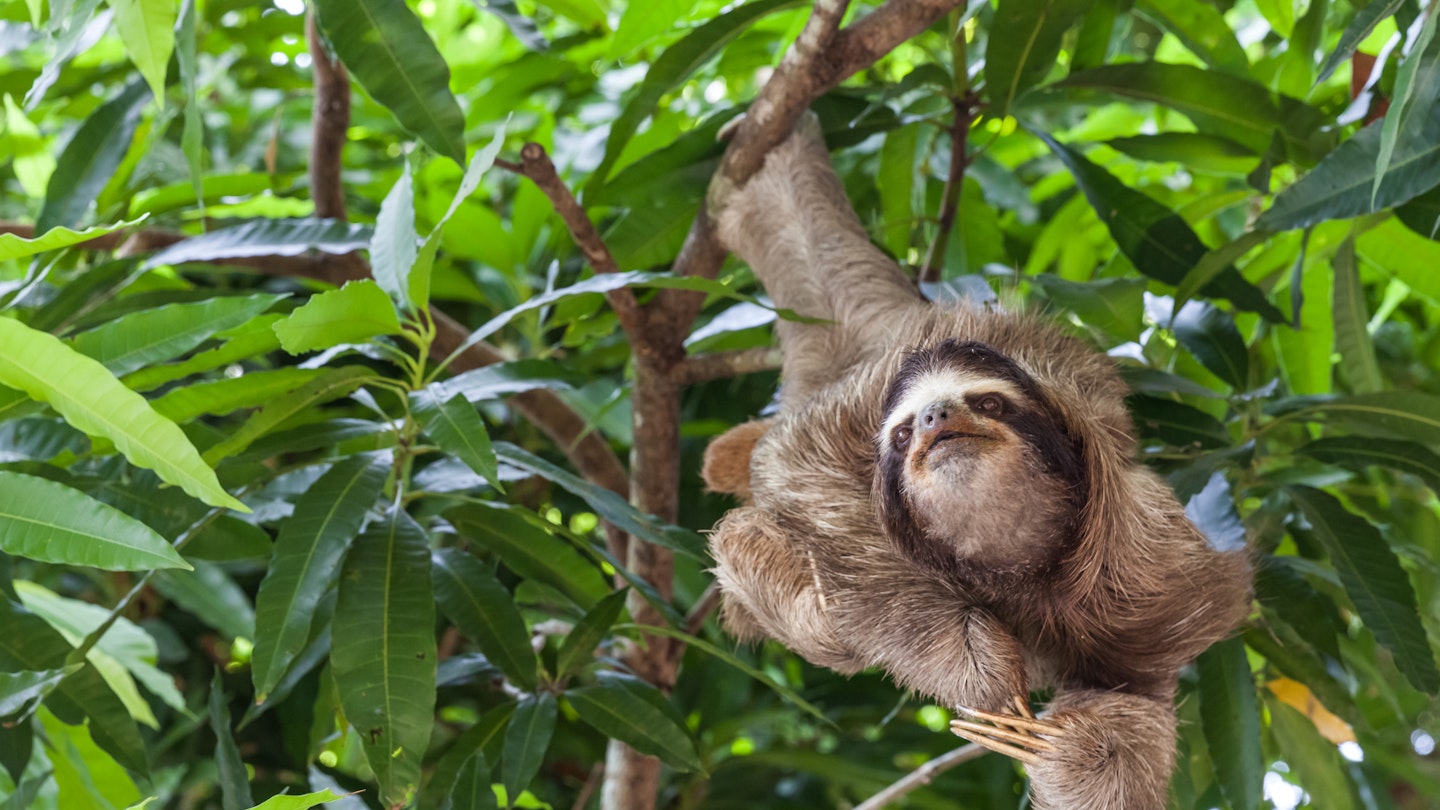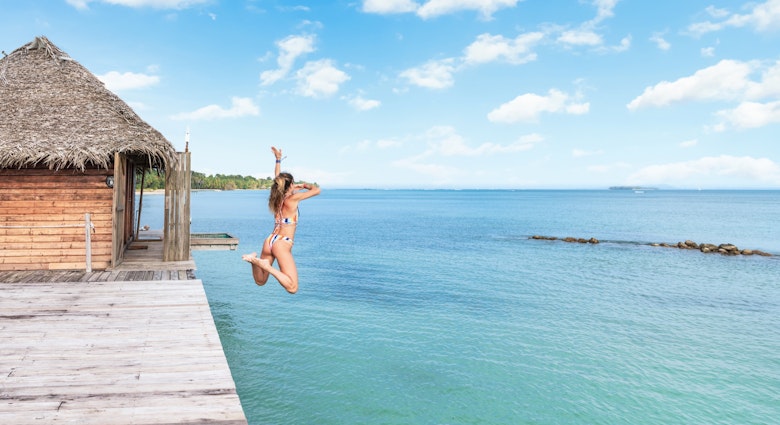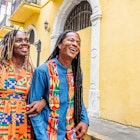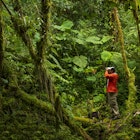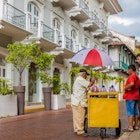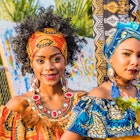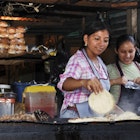While people often think of Panama in terms of its namesake canal, hat, and city, this little country is more than industry and urban glamour: it has a wild side. From resplendent quetzals (one of almost 1000 bird species recorded here) and neon frogs to a profusion of orchids and more than 1500 types of tropical trees, Panama contains one of the greatest assortments of fauna and flora in the world.
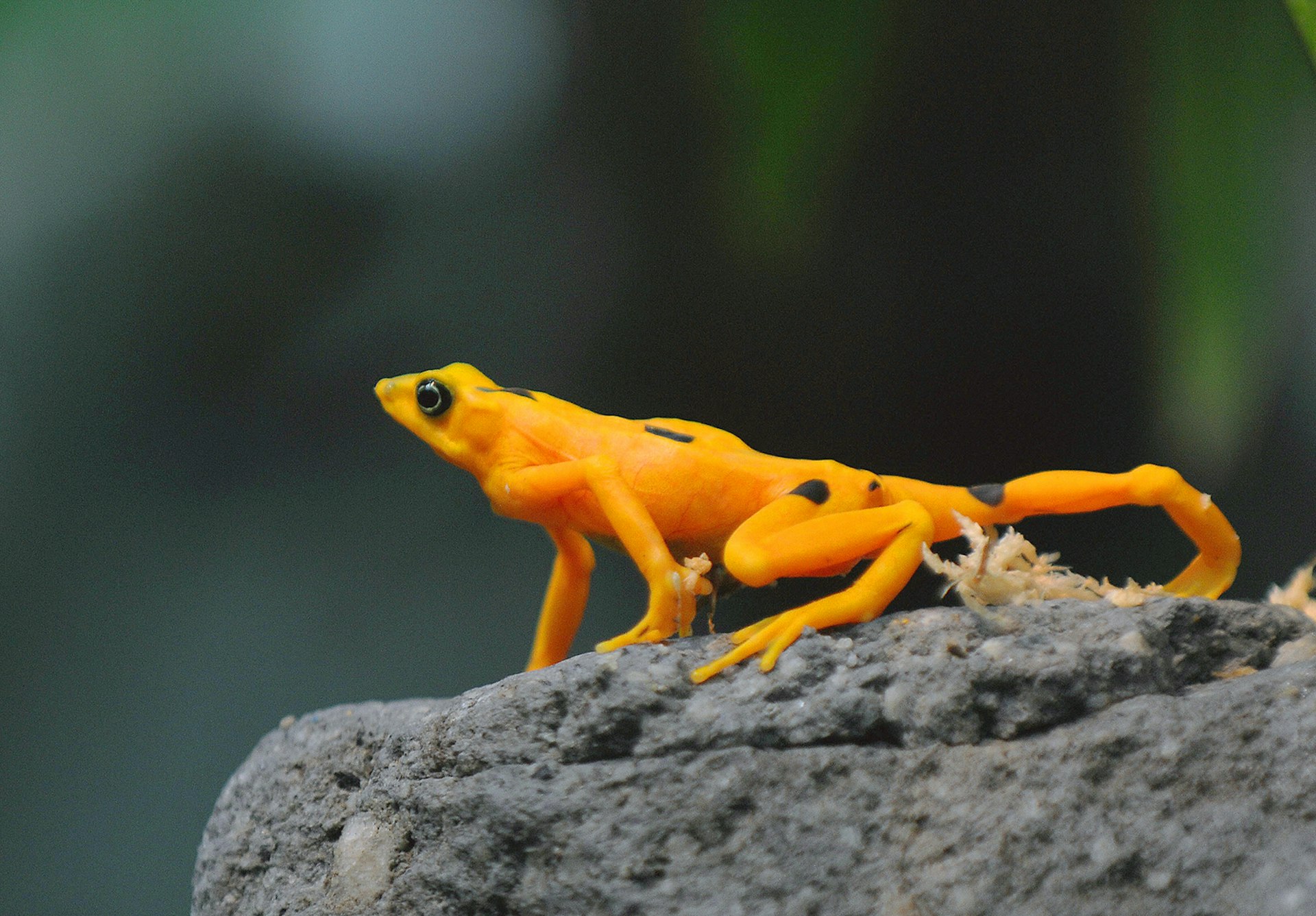
If you start your Panamanian adventure in Panama City, make a beeline for the new BioMuseo housed in an iconic structure of crumpled, multi-colored forms designed by North American architect Frank Gehry. Its permanent collection, Panama: Bridge of Life, spreads over eight galleries and introduces visitors to the biodiversity of this sliver of a land and its impact on the planet. Even a short stroll up protected Ancon Hill, the highest point in the capital, will pay dividends. You’re almost certain to spot sloths, coatimundi and tamarins (a type of small local monkey) while raptors migrate overhead.
Frogs
The rarest of Panama’s compelling collection of amphibians is the threatened golden frog. Though almost never encountered in the wild nowadays, a number of these gilded creatures reside at El Valle Amphibian Conservation Center at El Níspero, a zoo in El Valle. Much more easy to see, especially in the Bocas del Toro archipelago, are the various brilliantly colored poison dart frogs. Catch a glimpse of the minuscule strawberry poison dart frogs in the gardens of Beverly’s Hill and Up in the Hill on Isla Bastimentos; to spot the dazzling turquoise poison dart frog, take a tour of Green Acres Chocolate Farm on Isla San Cristóbal.
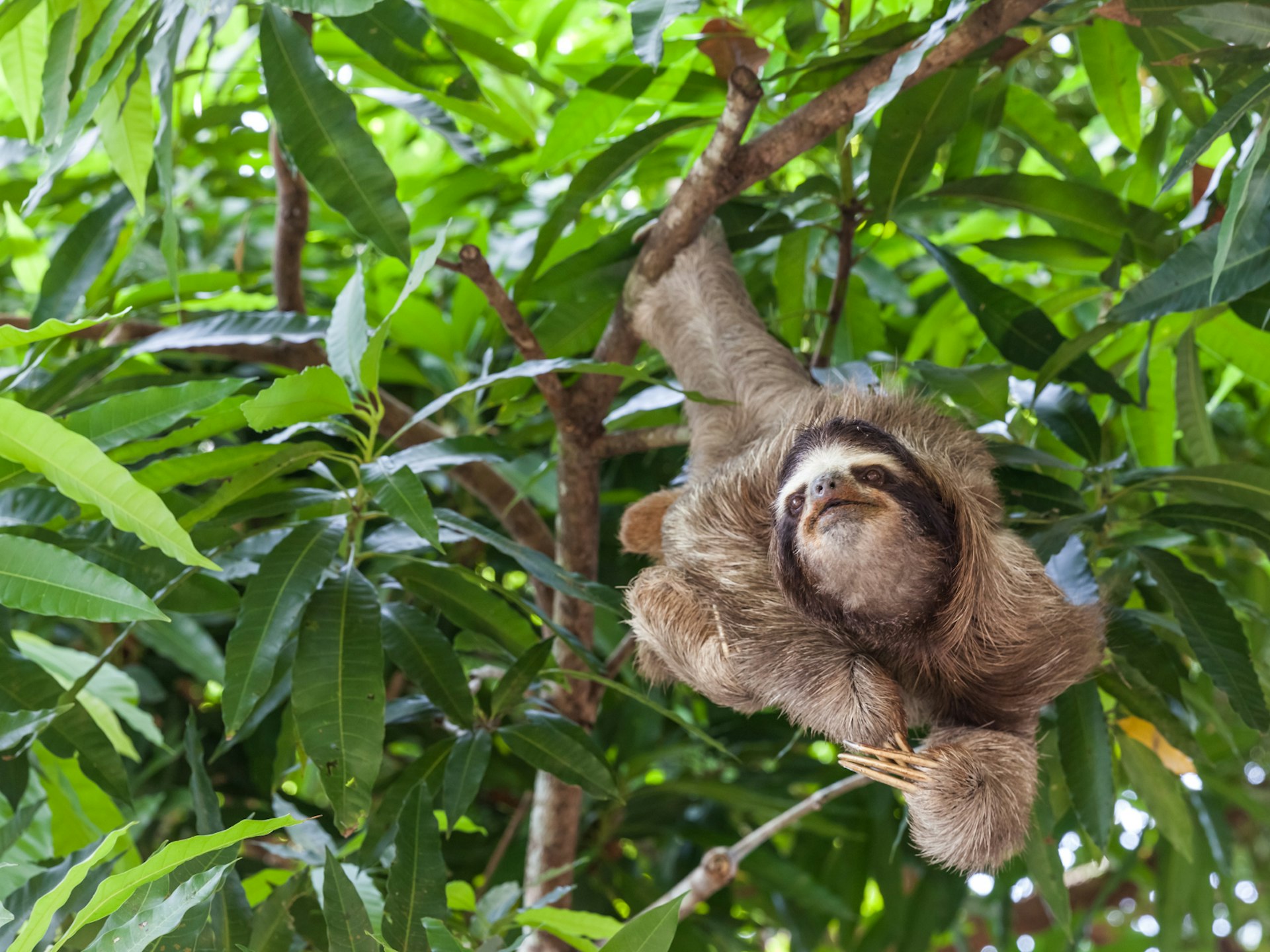
Sloths
Almost as Panamanian as that canal (the hat is actually Ecuadorian in origin but don’t tell anyone), perezosos (`lazies’) live solitary lives high up in the tree canopy of the tropical rainforest, where they feed on tough leaves. They spend up 20 hours a day asleep or inactive, but a weekly call of nature leads them – very slowly – down to terra firma. Sloths can be seen throughout Panama, though they often are curled up so high off the ground that they are difficult to spot. They live in profusion in the Parque Nacional Marino Isla Bastimentos, the grounds of Los Secretos Guesthouse on Isla Bastimentos and Finca Los Monos Botanical Garden in Bocas del Toro town.
Sea turtles
Panama hosts five of the world’s seven species of sea turtles and you’ll spot them along both coasts, including the Caribbean’s Parque Nacional Marino Isla Bastimentos and the Golfo de Chiriquí in the Pacific. Witnessing these critters climbing up above the waterline to lay their eggs in the sand is an unforgettable experience. You can do this at a half-dozen different beaches, including Playa Bluff outside Bocas del Toro town and Malena Beach on the Sunset Coast of Veraguas, but the mecca is Isla Cañas off the southern coast of Península de Azuero. Tens of thousands of female olive ridley turtles and other endangered species such as hawksbills and loggerheads arrive here between July and early November.
Orchids
Panama is home to upwards of 10,000 plant types and favorite flowering ones include heliconia, torch ginger and passion flower. But orchids enjoy a special status among Panamanians – indeed, the aromatic Holy Ghost Orchid is the national flower. You’ll encounter more orchid varieties than you knew existed at Boquete’s annual Feria de las Orquídeas, a fair held in April. At other times, visit one of two stunning orchid gardens: El Valle’s Aprovaca Orquídeas and the Finca Dracula in Guadalupe. And by all means do not miss the bizarre Monkey-Face Orchid and the Bela Lugosi Dracula Orchid.
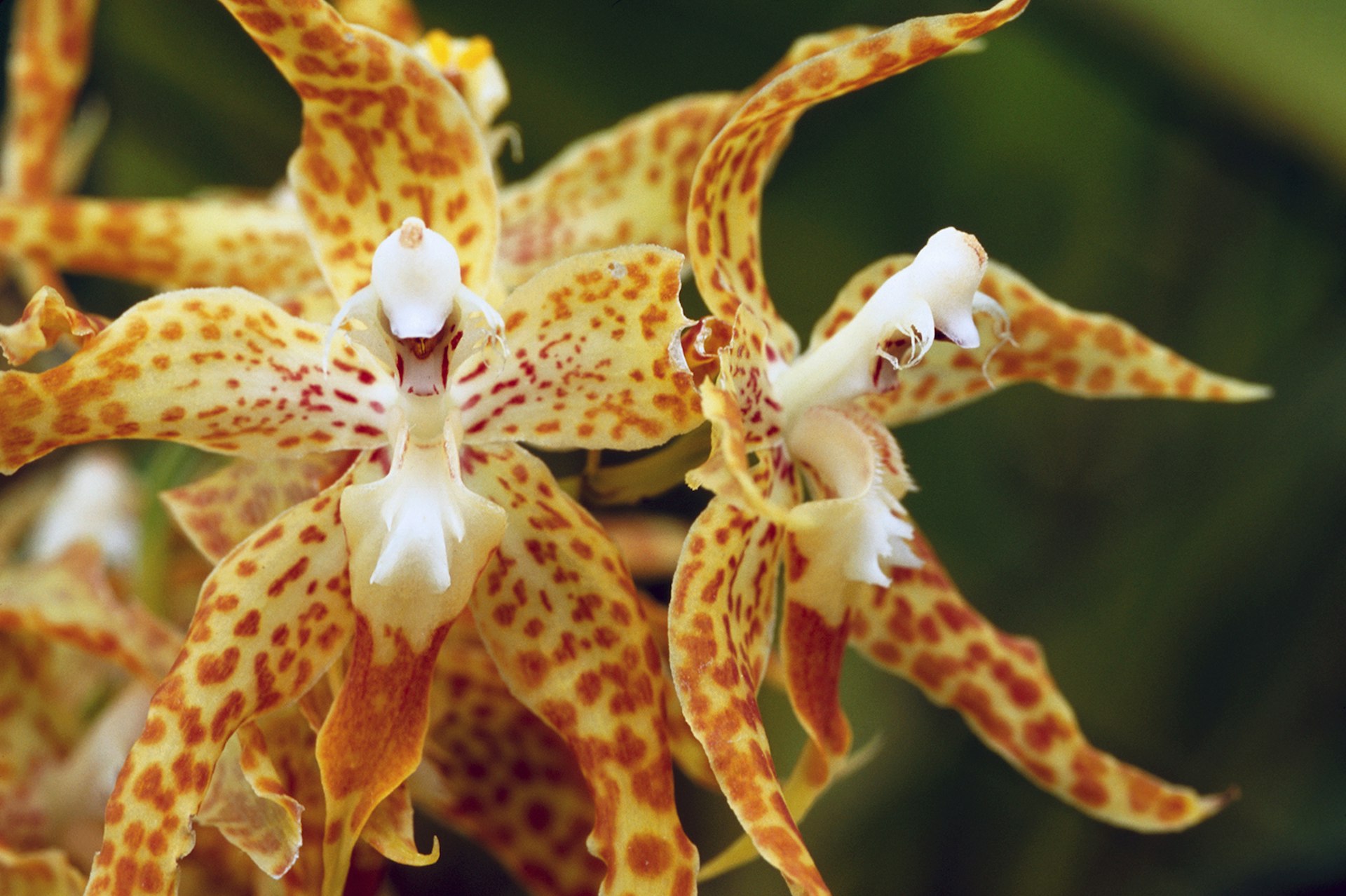
Birdlife
Panama is a birdwatcher’s paradise. Just a dozen kilometers north of the capital lies Parque Nacional Soberanía and its Pipeline Road, a 17 km-long trail where more than half of Panama’s recorded bird species have been spotted. Farther afield is a favorite venue at the southern end of Isla Bastimentos, Tranquilo Bay, which boasts a 25m-tall birdwatching tower and in-house biologist guides who will lead you to where hummingbirds bathe. Los Quetzales Cabins in Guadalupe are so high up, your nose is practically in the rainforest canopy. Birds dart in and out of the lookout balconies and nest in the surrounding trees.
Marine life
Panama’s offshore waters teem with sea mammals, including humpback and sperm whales, and whale-watching expeditions are big business along both coasts. But if you’d like to get beneath the surface for a closer look at the technicolor world below, seize the chance to dive or snorkel in the warm waters of Parque Nacional Coiba. It shelters one of the greatest assortments of tropical reef fish in the world and is a highlight of any visit to Panama. Snorkeling and diving can be disappointing on the Caribbean coast, with many rivers discharging silt into the seas around the Bocas del Toro archipelago, but that’s not the case off Isla San Cristóbal where the mangrove islets within sight of Dolphin Bay Hideaway offer some of the best visibility in the country.
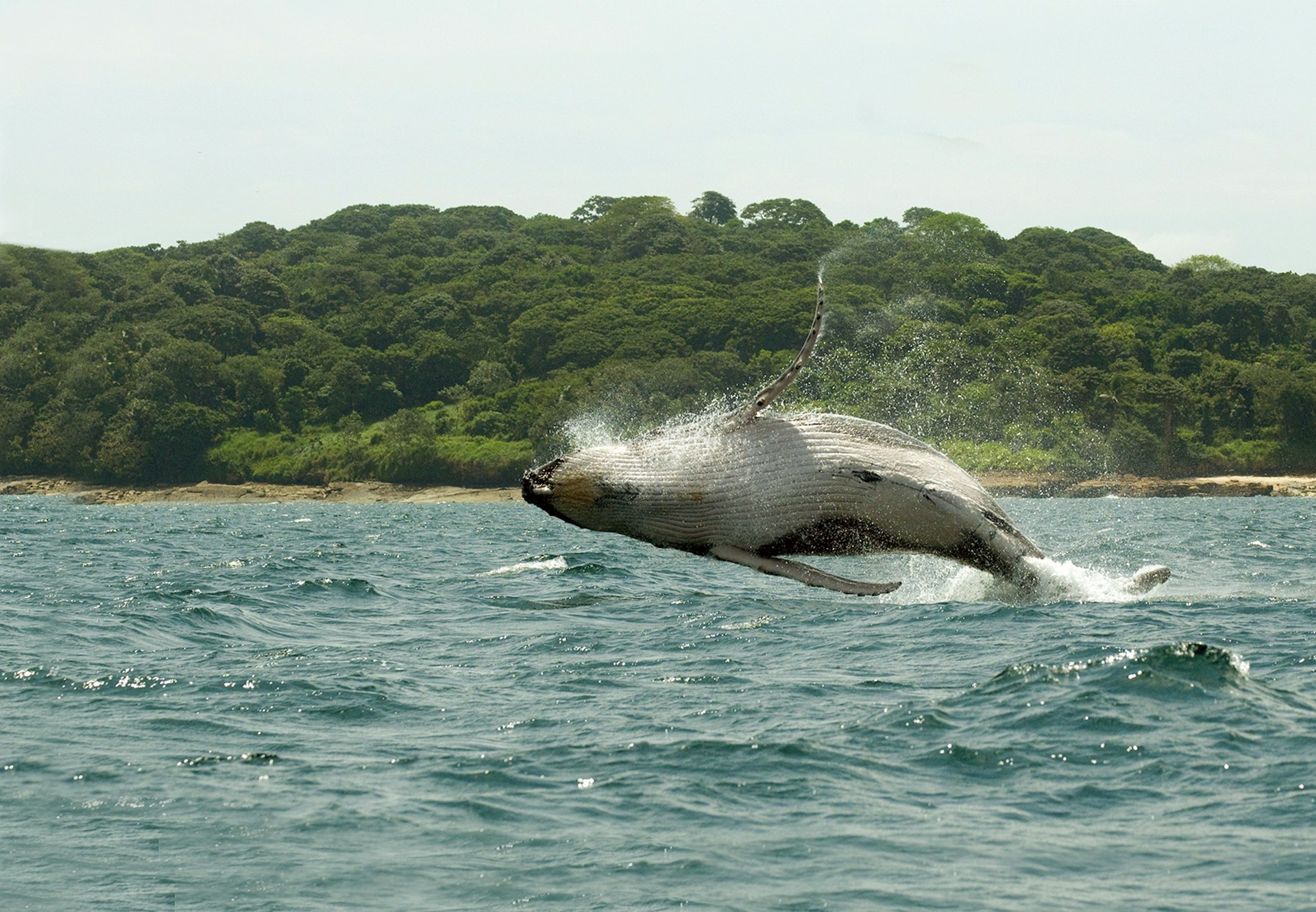
Coffee and chocolate
Panama is a net exporter of coffee – almost exclusively the Arabica variety – and produces Geisha, one of the most sought-after (and expensive) types of java in the world. The center of industry is in the highlands of Chiriquí, especially around Boquete and Volcán. Two recommended tours that will lead you through the process of production from coffee cherry to cup include Coffee Adventures Tours in Boquete and the tours at the Janson Coffee Farm at Volcán. If chocolate is more your thing, Bocas del Toro is gaining quite a reputation as an important producer. For the full story on how a cocoa pod turns into a candy bar, join a tour at Green Acres Chocolate Farm on Isla San Cristóbal or La Loma Jungle Lodge on Isla Bastimentos.
https://shop.lonelyplanet.com/products/lonely-planets-best-in-travel-paperback-2019
